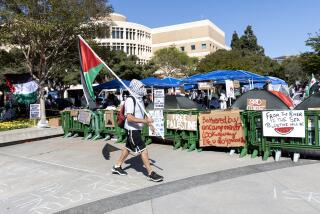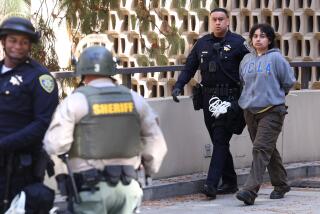After blackface incident, minority students at Cal Poly San Luis Obispo say they don’t feel welcome
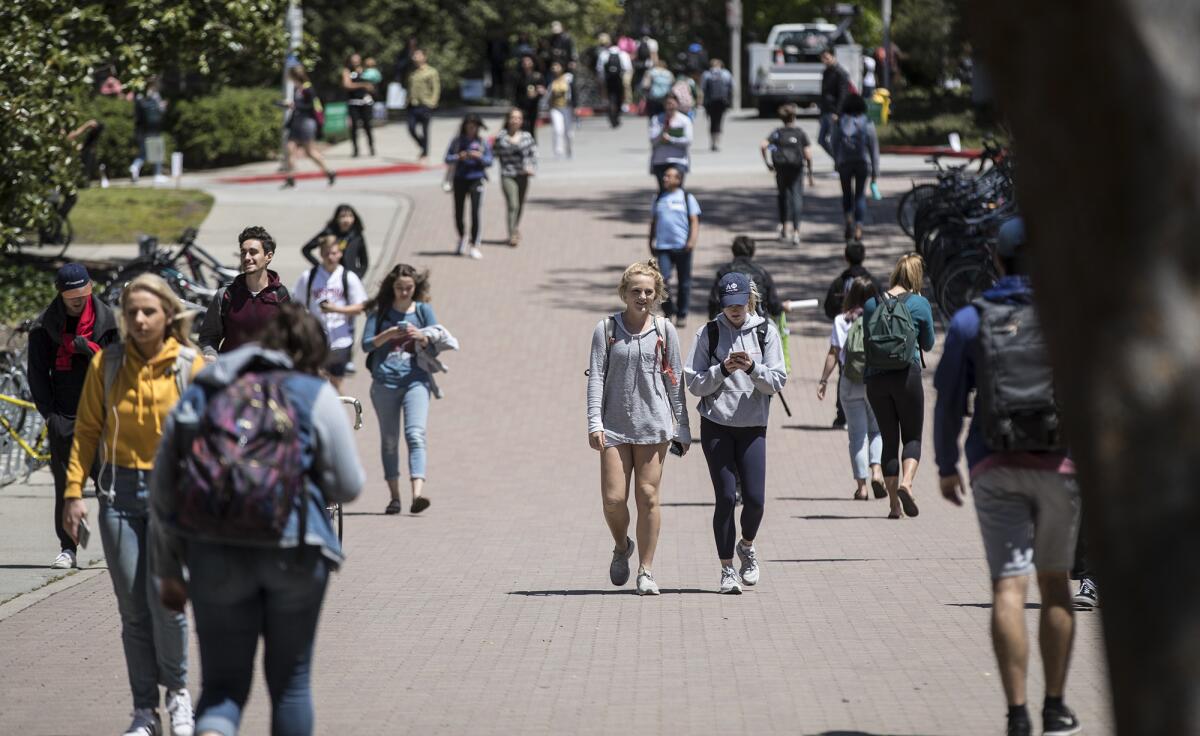
Reporting from San Luis Obispo — Aaliyah Ramos was walking through the Cal Poly San Luis Obispo campus last year when a prospective student approached her.
Ramos was the only black person, the young woman said, that she and her mother had seen that day. They asked about the quality of education and the diversity of the student body.
Ramos, a mechanical engineering student, didn’t want to sugarcoat the truth: Cal Poly long has been predominantly white. But she told the young woman — who also was black — that she didn’t want to discourage her from applying, because that wouldn’t help with diversity at a school where only 0.7% of students are African American — the lowest percentage of any university in the California State system.
Now, after a recent spate of racial incidents — including a white fraternity member appearing in blackface — Ramos is reconsidering her answer.
“Yes, we have good resources here,” Ramos said. “But if you truly value your well-being and your ability to feel like you can be yourself and be respected and welcomed on campus, do your research and find a school that strives to make everyone feel this way.”
When a white member of the Lambda Chi Alpha fraternity was photographed at a party this month wearing blackface, the image spread over social media, and the outrage was felt campuswide.
At the same April 7 party at the off-campus frat house, other members were photographed wearing baggy jeans, fake tattoos and gold chains while flashing gang signs. It happened to be Cal Poly’s multicultural weekend.
Photos also emerged of members of the Sigma Nu fraternity at another party earlier this year wearing ribbed tank tops, gold chains and bandannas. The caption posted on social media read, “When you get he (sic) holmes to take a photo of la familia.”
The photos have sparked blunt, painful conversations about the treatment of minority students on the campus, the least diverse in the 23-school system. Cal Poly’s student body was 54.8% white in fall 2017, according to system data. The Cal State campuses are 23.5% white overall.
Cal Poly also has a higher percentage of white students than all 10 University of California campuses.
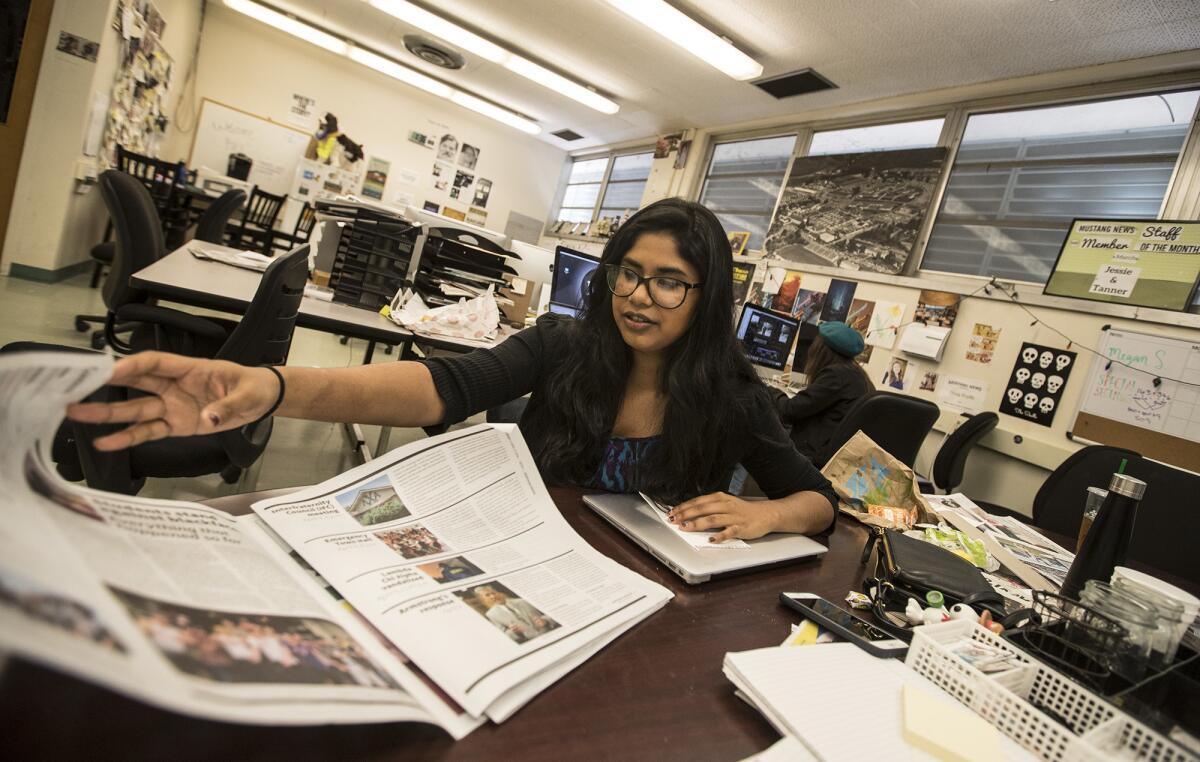
Last week, the administration announced an indefinite suspension of all Panhellenic sororities and Interfraternity Council fraternities. Matt Lazier, a university spokesman, said the racially charged photos were just the latest problems with the Greek organizations, including sexual assault, hazing and the alcohol-related death in 2008 of a freshman.
“This is not an attempt to get rid of Greek life at Cal Poly,” Lazier said in a statement. “Rather, it is a pause and reset. We will welcome Greek organizations back to active status when we are confident that they have a definite and achievable plan to hold themselves and each other accountable.”
Many students said they were disappointed by the administration’s response. Neither the student in blackface, Kyler Watkins, nor any of the students dressed as gangsters was expelled.
Watkins, an agricultural business senior, could not be reached for comment. In a letter to the Cal Poly student newspaper and other publications, he said the decision to paint his face “had nothing whatsoever to do with racism or discrimination.”
“Growing up white and privileged, I was truly unaware of how insensitive I was to the racial implications of blackface,” he wrote. Watkins said he and other Lambda Chi members were playing a game in which the teams were represented by colors, and he painted his face because he was on the black team.
Lazier said students in the photographs would not be expelled because of their constitutional right to free speech.
That stance has struck a particularly dissonant chord on the campus, where the College Republicans group erects a “Free Speech” wall each year that previously has had racist and sexist comments scrawled on it. At the College Republicans’ invitation, Cal Poly is scheduled on Thursday to host far-right provocateur Milo Yiannopoulos, who spoke there last year. The event is expected to draw a huge police response.
A group of students called the Drylongso Collective, formed in the wake of recent controversies, has called on the administration to match the $55,000 that CSU spent on security for Yiannopoulos’ 2017 speech and the costs for Thursday’s event, and devote the money to minority, LGBTQ and women’s programs. The request was among a long list of demands.
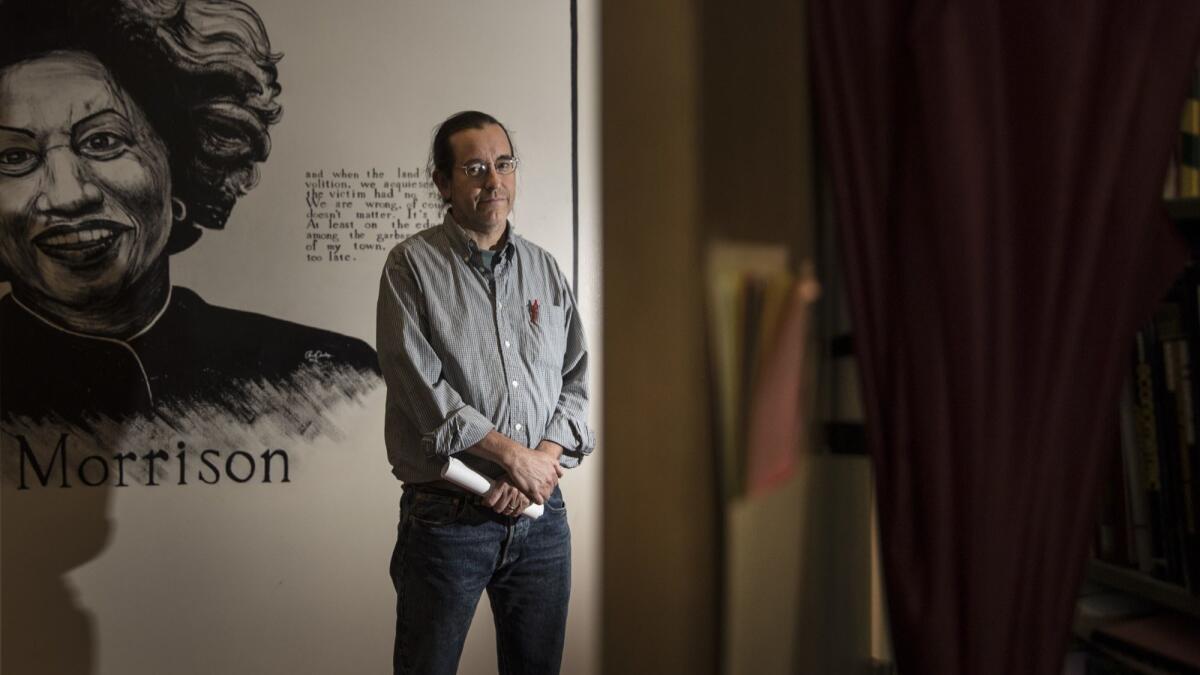
Cal Poly President Jeffrey D. Armstrong acknowledged in an interview that minority students face struggles on the campus.
An alumnus, who is black, recently told Armstrong that when he once walked into an engineering class, someone asked, “What sport do you play?” When he said none, he was asked, “Well, how did you get in?” In the wake of the blackface incident, Armstrong said, a faculty member told students they were being “too sensitive.”
Armstrong said he hopes the blunt conversations of recent weeks will reshape the campus culture.
“There are people of my identity which have no clue what white privilege means,” Armstrong said. “They’re starting to ask questions. … One of the things that I believe I need to do better as a white male is to talk about white privilege and help our students understand that.”
Jozi De Leon, the university’s new vice president for diversity and inclusion, said there are numerous initiatives to attract a more diverse student body and faculty, and create a more welcoming campus climate.
There have been some improvements, she said. In 2011, the campus was 63% white and is now the most diverse it’s ever been.
“I really think that this university, in spite of the fact that we are having issues now, that we really are going in the right direction in terms of diversity and inclusion,” De Leon said.
The Panhellenic Assn. declined to comment on the controversies. The Interfraternity Council could not be reached.
At the Lambda Chi house last week, a blue tarp covered a fraternity sign, “No Trespassing” signs lined the yard and the fraternity’s letters had been removed from the house’s exterior.
A third-year student who used to belong to the Alpha Phi sorority but did not want to give her name because she still works closely with the Panhellenic Assn. said the fraternities deserved to be punished but that it was sad the sororities got wrapped up in it.
“Pitting all Greek life as being racist isn’t bringing the student body together,” she said. “Everyone in Greek life is being put in that bubble.”
She said prospective students already have pulled out of sorority recruitment. Another woman then walked up and angrily told her to stop talking to a reporter.
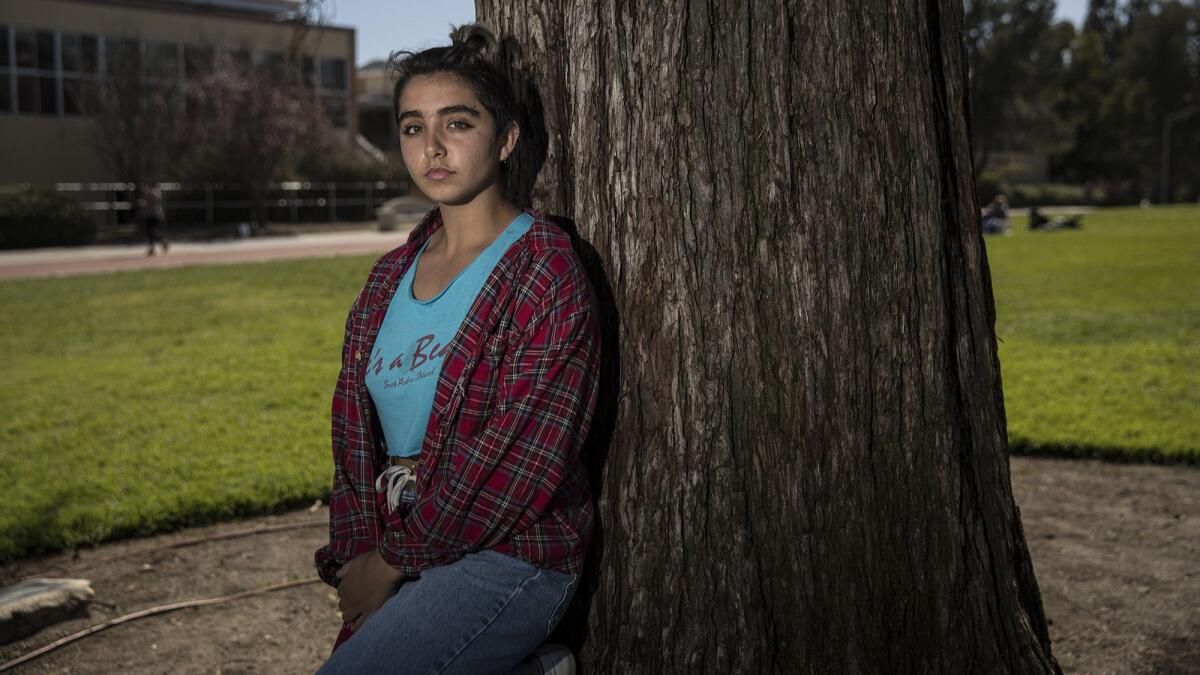
Last week, the N-word was found scrawled in red marker on a bathroom stall in the English building. Racist fliers — including one suggesting skin tone was correlated with homicide and rape rates, and another insinuating that black people were a human subspecies — were posted in the same building.
Professor Neal MacDougall, who discovered the posters pinned up outside his door, said he and other faculty members are concerned the administration is too worried about protecting the Cal Poly “brand” to forcefully reckon with racism on campus.
“Racism is not simply the Klan marching around in hoods and burning crosses,” he said. “Some people think that if you don’t see those super-explicit, in-your-face things on a regular basis, you could say there’s no racism here.”
Many minority students at Cal Poly say racism, both overt and subtle, permeates their lives.
Quentin Harrison, a 20-year-old sophomore who is black, said other students talk down to him or act intimidated by him. He notices women clutch their purses a little tighter when he walks toward them. If it’s getting dark, he sees people turn and go the other direction to avoid him.
Gianna Bissa — a 20-year-old Latino student who identifies as nonbinary and uses the gender pronouns they and them — said they were misguided by the school’s progressive recruitment rhetoric when choosing a school.
“I remember the first time coming here, just being so shocked and confused,” said Bissa, who is from Sacramento. Bissa often is the only minority student in class and said it’s exhausting feeling as if they have to represent every nonwhite point of view.
The Hispanic Business Student Assn. was one of more than 40 clubs that boycotted Open House, a major campus recruitment event, in protest over the recent racial incidents. A few days before the fraternity photos surfaced, the group hosted a panel for dozens of minority high school students who asked if members felt safe on campus.
“I remember saying it’s our space as much as it’s anyone else’s who receives admission,” said the group’s president, Ilianna Salas. “After all this happened, I just felt like what I was saying was a lie.”
Salas, 21, said those students have since been sending text messages to members of her club, concerned about the race-based incidents.
Naba Ahmed, editor of the campus newspaper, Mustang News, said the administration has sent emails lauding diversity and inclusion but that they ring hollow.
“There have been so many incidents of racism on this campus that it’s really frustrating that more isn’t happening,” said Ahmed, a 20-year-old Muslim student who is of Indian and Kenyan descent. The blackface incident, in particular, will long be remembered as a stain on the university, she said.
“It’s going to come up when people search Cal Poly on the internet. It’s going to come up when people come for tours,” she said. “I don’t think it’s going to just go away or be pushed under the rug like people want it to.”
Twitter: @haileybranson
More to Read
Sign up for Essential California
The most important California stories and recommendations in your inbox every morning.
You may occasionally receive promotional content from the Los Angeles Times.

